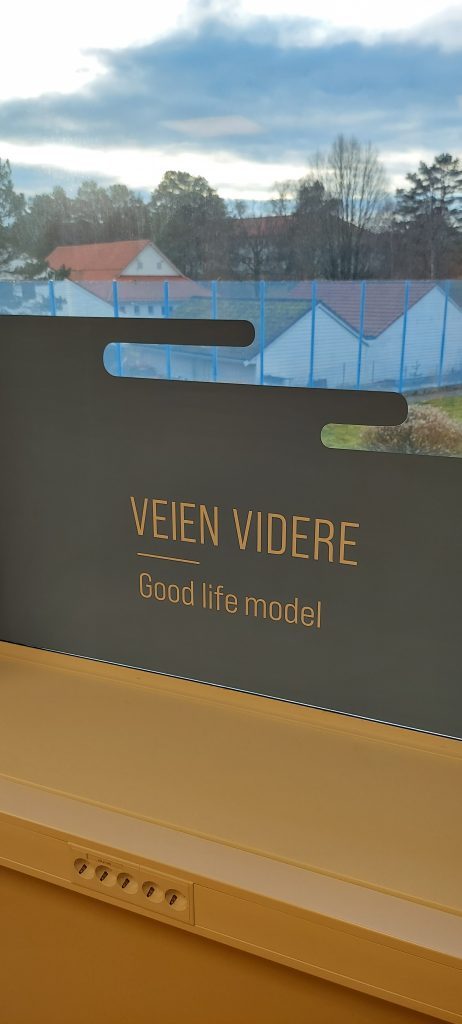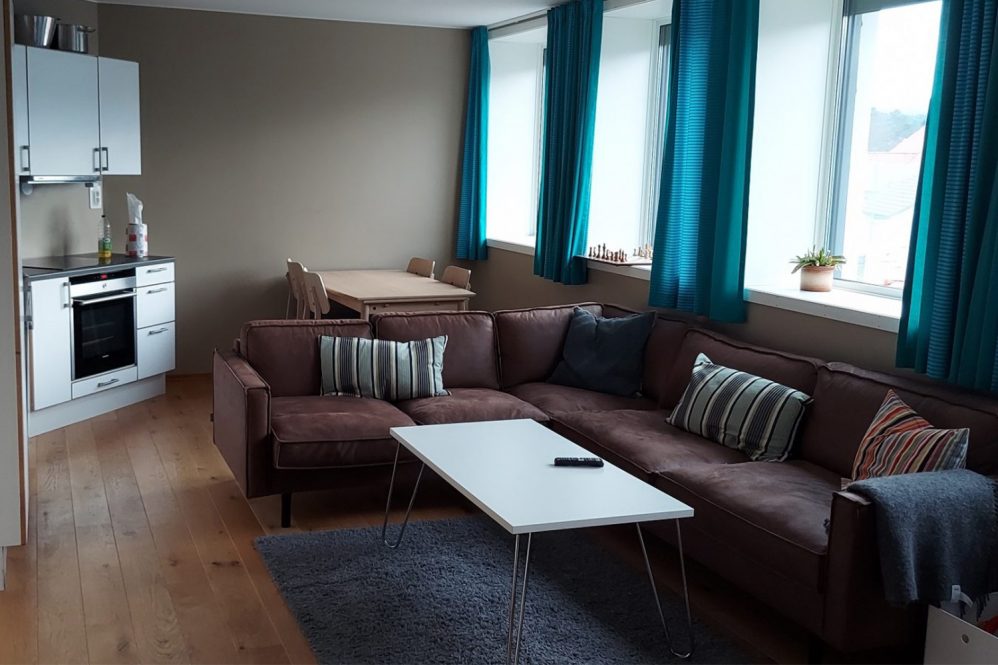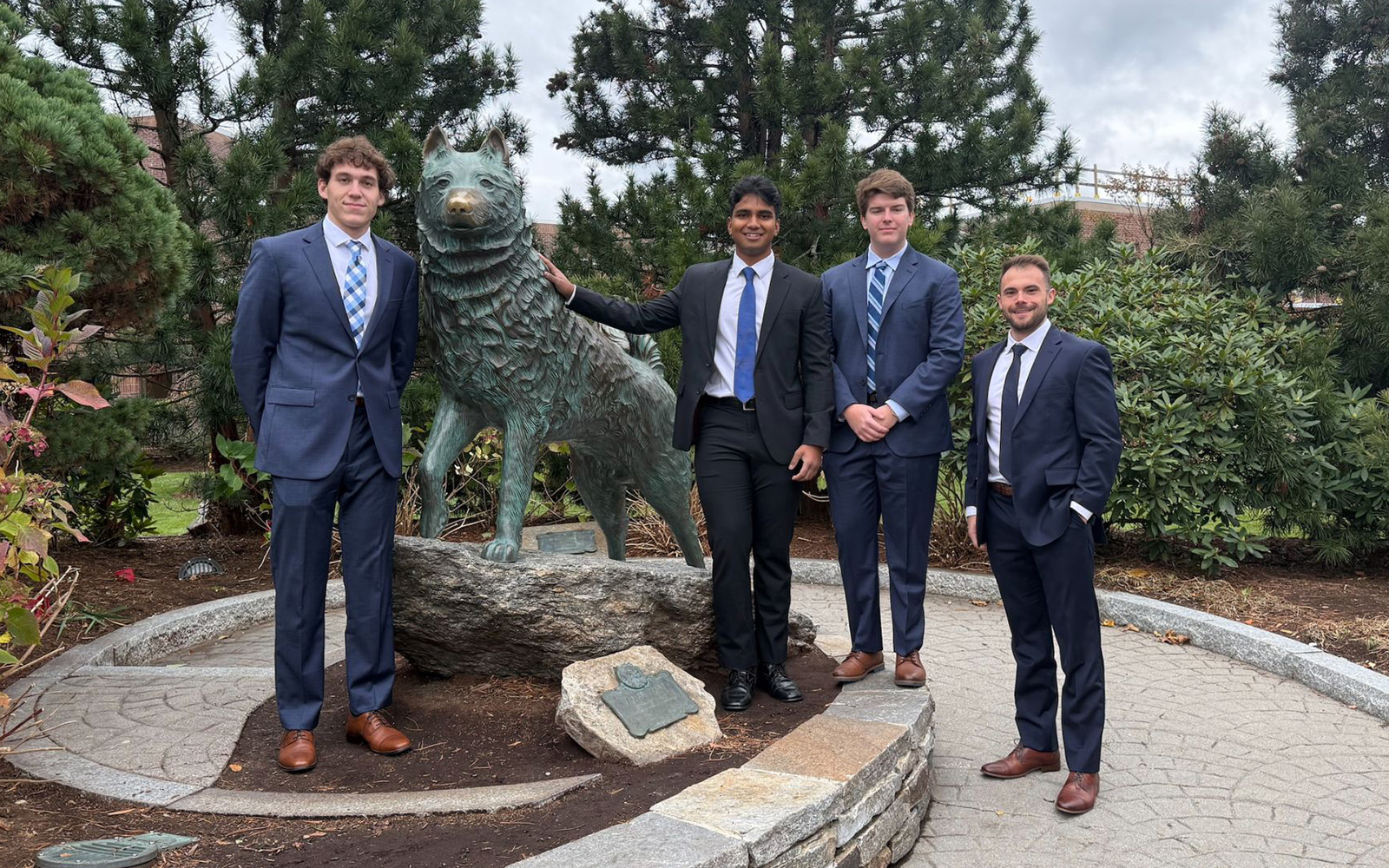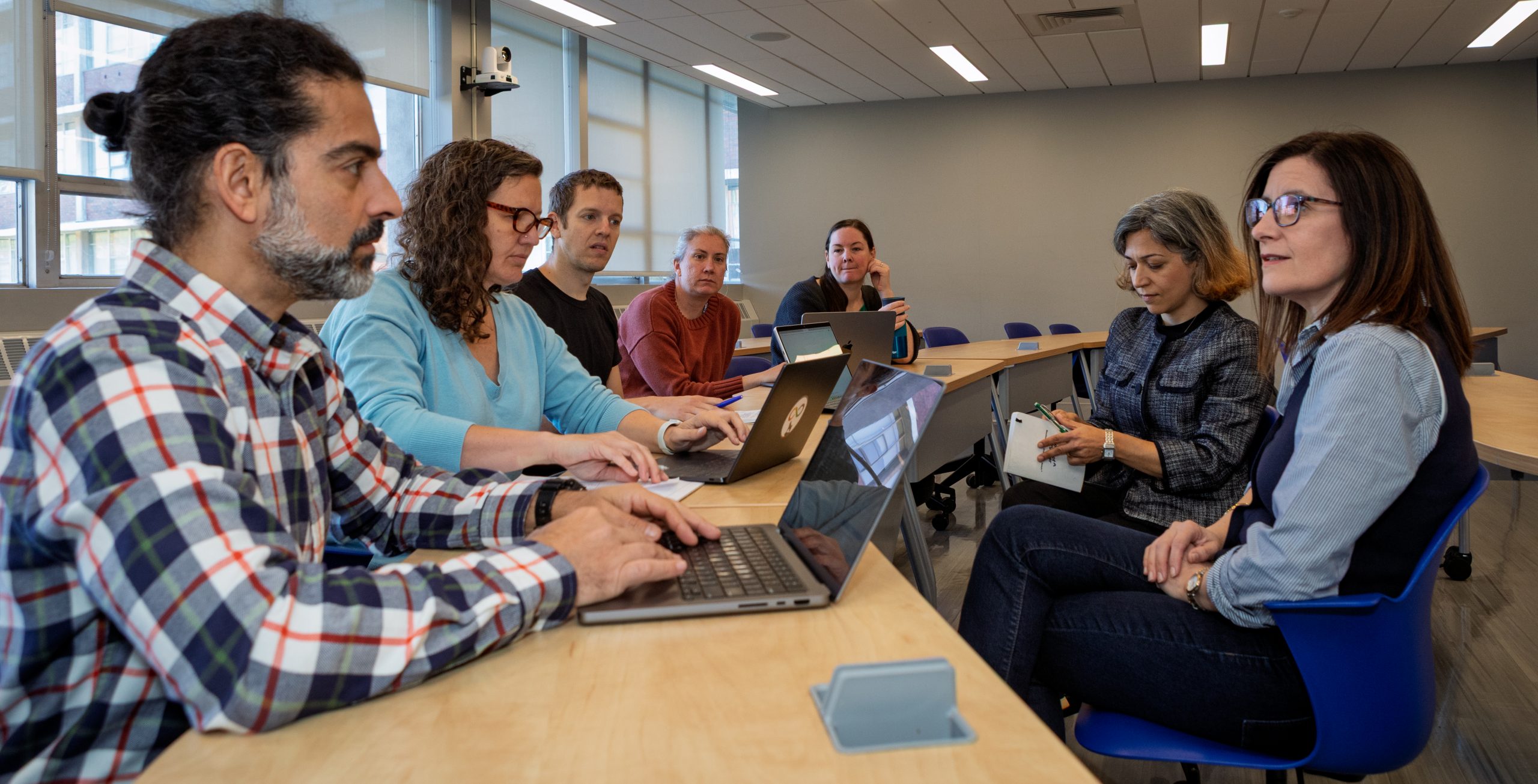On a trip to Norway to visit its prisons and consider what Connecticut could be doing differently, something as small as a holiday work party was indicative to the delegation from UConn of a stark difference between the two systems.
“For me, when the Norwegian correctional officers invited us to their holiday party, that became a representation of our overall experience. It spoke to the inclusion and transparency we witnessed throughout our engagement, as well as how Norway cares about the health and well-being of everyone within the correctional environment, including officers,” says Andrew Clark, director of the Institute for Municipal and Regional Policy in the School of Public Policy.
In the U.S., the average life expectancy for correctional officers is lower than the general population in part because of how the job impacts their health and well-being, Clark says. And in Connecticut, there aren’t holiday parties.
“The systems we have in the U.S. do a disservice to the officers, not just those who are incarcerated but the people who are working there,” he says. “As a result of our prison environment there is much more substance abuse and domestic violence among people working in prisons. There’s also lower job satisfaction, and you can imagine how that translates to life on the inside.”
Clark and a dozen others traveled to Norway recently as part of what they call an International Justice Exchange Project to study its correctional system, which centers on rehabilitation and the most basic idea of creating a good neighbor.
It’s a continuation, Clark says, of an ongoing effort started in 2015 when former Gov. Dannel P. Malloy and others traveled to Germany to learn about its prison system and enact changes here, such as the creation of the TRUE unit at Cheshire Correctional Institution and the WORTH Unit at York Correctional Institution.

A change in administrations in 2019 and the ongoing pandemic stalled Connecticut’s introspective look. But as Clark became increasingly involved with UConn’s Dodd Center for Human Rights and the Black Lives Matter movement swept the country, he says he and others became reinvigorated, especially as word about Norway’s model was spreading among those who consider worldwide prison conditions.
“It has arguably the most humane, most just, and most effective system in the world in terms of low recidivism and incarceration rates. If you’re looking at best practices, why don’t you go to the best in the world,” he says.
But how could a nonpartisan group from UConn that studies urban issues to affect change at the local and state levels connect with the Norway prison system? The answer was simple: Knock on the door.
Clark says a social work intern at IMRP had a boyfriend in Norway who visited the prison nearest his home and simply said hello. That, Clark says, sparked a connection and three years of virtual conversations that included several webinars to draw in community partners from around the Nutmeg State.
“We were just flabbergasted, frankly, by how open, honest, and willing a prison director would be to have a conversation,” Clark says. “We were having open, public conversations about how the system works, can change, and what’s being done. It was readily apparent how proud they were of the system they’d created and are a part of now.”
Brittany LaMarr ’21 (CLAS), ’23 MPP, ’25 JD was among those drawn into the conversation.
“Being able to go over to Norway was important to garner a visceral understanding of what its system looks like and how it is perceived by the Norwegian society, corrections officers, currently incarcerated individuals, administration, and staff,” says LaMarr, who’s also project manager of Connecticut’s Juvenile Justice Policy and Oversight Committee at the Tow Youth Justice Institute. “It is one thing to read something, it is another to be there and feel something.”
In late 2022, Clark says he asked those who’d been part of the webinars and other panels if they’d be interested in visiting Norway from Nov. 26 to Dec. 3 to get a firsthand look at what they’d been dissecting the last few years. Several journalists from Connecticut Public joined the group.
“In Norway, the punishment is the taking away of freedom. No other rights are restricted, and the work of the correctional system is to create good neighbors,” Clark says, noting that correctional officers have three years of training, including both theoretical and practical, compared with just six weeks in Connecticut.

Life for those who are incarcerated is vastly different in Norway, too. It reflects what life is like in the community.
Cells look like dorm rooms with private showers, Clark says. People cook together, wear their own clothing, and have keys to their doors.
“Life becomes more normalized the closer you get to your release. Incarcerated people should be able to understand what it would be like to live in an apartment, cook for yourself, create a weekly menu and grocery shopping list, grocery shop using a debit card to pay in self-checkout, integrate with their family and community, and be responsible for themselves before they get released,” he says.
As profound as the hosting of a holiday party was for Clark, Aileen Keays, director of the Connecticut Children with Incarcerated Parents Initiative at UConn, says that one statement summed up for her what Norway does right: When she asked about an incarcerated parent’s ability to have contact visits with their child, she was told, “The child is not the threat.”
Sure, adults might need to visit with other adults in non-contact areas, but private visits with children in a living room-like area is the norm, she says. If the adults are unable to have private visits with each other, then during the visit between the incarcerated parent and their child, the child’s caregiver waits in a separate space.
“It was these commonsense remarks and policies that were so striking,” Keays says. “They also were the reason to immerse ourselves in their correctional facilities because although this comment was profound to us, it was completely unremarkable to them and would have likely been missed had we not been there in person for personal tours and extended conversations.”
Norwegian prisons also outsource from the community educational and health resources, even turning to local libraries for lending or staffing for their own. Clark says this allows those in prison to become familiar with what’s available to them in the outside world at the end of their sentence.
It also creates less tension between incarcerated individuals and officers, who are seen as rehabilitative partners and not keepers. That relationship benefits everyone when inevitable problems arise.

“In the U.S., we criminalize race and poverty, then operate a criminal legal system that dehumanizes, destroys, and punishes an individual for the remainder of one’s life,” LaMarr says. “In Norway, there are very few collateral consequences to incarceration. It does not impact housing opportunity, educational opportunity, eligibility for social services, loans, or employment. Whereas, here in Connecticut and the U.S. at large, we prohibit individuals with criminal backgrounds from gaining housing, employment, and access to their basic needs for survival.”
Upon their return, the project group has started to look at next steps. That might include bringing a visiting scholar to Connecticut to consider reforms here, Clark suggests, or capitalizing on UConn’s Baden-Wuerttemberg Connecticut Partnership by visiting Germany with legislators and members of the Connecticut State Sentencing Commission, which the IMRP administers.
Another possibility is joining with other states that are exploring this change, including California, North Dakota, Oregon, and Washington.
“Part of what you come away with is that we’re all humans and we’re all capable of what other humans are doing – for good or for bad,” Clark says. “Once people are able to ask questions, then that veneer of ‘this isn’t possible’ begins to fade and people become generally engaged and want to do better. My belief is that mentality can be contagious.”



